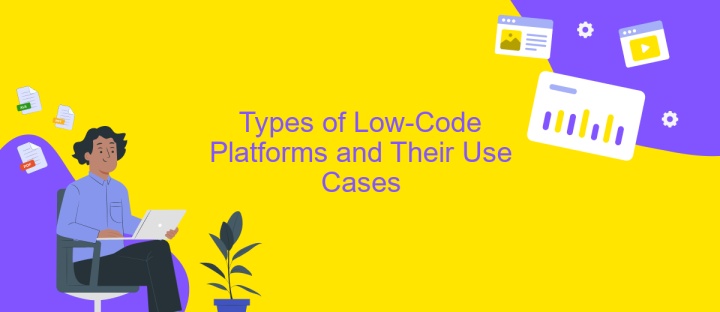Low-Code Services
In today's rapidly evolving digital landscape, low-code services have emerged as a game-changer, empowering businesses to accelerate their development processes. By enabling users to create applications with minimal coding, these platforms democratize software development, allowing both technical and non-technical users to collaborate effectively. As organizations strive for agility and efficiency, low-code services offer a compelling solution to meet the growing demand for innovative digital solutions.
Introduction to Low-Code Services
Low-code services have emerged as a transformative force in the world of software development, enabling organizations to build applications with minimal hand-coding. This approach democratizes application development, allowing even those with limited technical expertise to contribute to the creation of software solutions. By leveraging visual interfaces and pre-built components, low-code platforms significantly accelerate the development process, reduce costs, and enhance productivity.
- Rapid application development: Low-code platforms allow for faster prototyping and deployment.
- Cost efficiency: Reduces the need for extensive developer resources.
- Improved collaboration: Bridges the gap between IT and business teams.
- Scalability: Easily adapt to changing business needs and growing user bases.
As businesses face increasing pressure to innovate and adapt quickly, low-code services provide a strategic advantage. They empower organizations to respond to market demands swiftly, enabling a more agile approach to digital transformation. By reducing the dependency on traditional coding, low-code platforms foster a more inclusive and collaborative environment, ultimately driving innovation and enhancing competitive edge in today's fast-paced digital landscape.
Benefits of Using Low-Code Platforms

Low-code platforms offer significant advantages by accelerating the development process, allowing businesses to quickly adapt to market changes. These platforms enable both technical and non-technical users to create applications with minimal coding, reducing the need for extensive programming knowledge. This democratization of app development not only saves time but also reduces costs associated with hiring specialized developers. As a result, companies can innovate faster and respond to customer needs more efficiently, gaining a competitive edge in their respective industries.
Moreover, low-code platforms facilitate seamless integration with existing systems, enhancing operational efficiency. Tools like ApiX-Drive simplify the integration process, enabling users to connect various applications without complex coding. This capability ensures that businesses can maintain a cohesive tech ecosystem, streamlining workflows and improving productivity. Additionally, the visual nature of low-code platforms promotes collaboration across departments, allowing diverse teams to contribute to the development process, fostering innovation and ensuring that the final product meets the needs of all stakeholders.
Types of Low-Code Platforms and Their Use Cases

Low-code platforms have revolutionized software development by enabling faster application delivery with minimal hand-coding. These platforms are categorized into different types, each serving distinct use cases.
- General-Purpose Platforms: These platforms are versatile, allowing businesses to build a wide range of applications, from simple internal tools to complex enterprise solutions. They are ideal for organizations looking to streamline operations without extensive coding expertise.
- Process Automation Platforms: Focused on automating business processes, these platforms help in creating applications that manage workflows, approvals, and routine tasks. They are commonly used in industries like finance and human resources to enhance efficiency.
- Mobile-First Platforms: Designed specifically for mobile app development, these platforms offer features to create responsive and user-friendly mobile applications. They are perfect for businesses aiming to reach customers on mobile devices quickly.
Each type of low-code platform provides unique advantages, making them suitable for various business needs. By selecting the right platform, organizations can accelerate digital transformation, reduce development costs, and improve time-to-market for their applications.
Key Features to Consider When Choosing a Low-Code Platform

When selecting a low-code platform, it's crucial to evaluate the features that align with your business needs. The right platform can empower your team to build applications quickly and efficiently, minimizing the need for extensive coding knowledge.
One of the most important aspects to consider is the user interface. A platform with an intuitive and user-friendly interface will enable both technical and non-technical users to navigate and utilize its functionalities with ease.
- Scalability: Ensure the platform can scale as your business grows and can handle increased user demand.
- Integration Capabilities: Look for a platform that easily integrates with your existing systems and third-party services.
- Security: Verify that the platform offers robust security features to protect your data and applications.
- Customization: The ability to customize applications to meet specific business requirements is essential.
Finally, consider the support and community around the platform. A strong support system and active community can provide valuable resources and assistance, ensuring you make the most of your low-code platform investment.
- Automate the work of an online store or landing
- Empower through integration
- Don't spend money on programmers and integrators
- Save time by automating routine tasks
The Future of Low-Code Development
The future of low-code development is poised to revolutionize the way businesses approach software creation. As organizations strive for agility and innovation, low-code platforms will become increasingly integral. These platforms empower users with minimal coding knowledge to design and deploy applications rapidly, reducing the dependency on traditional IT departments. This democratization of app development accelerates digital transformation, enabling businesses to respond swiftly to market changes and customer demands.
Integration capabilities will be a key focus area, with services like ApiX-Drive playing a crucial role. By simplifying the integration of diverse applications and automating workflows, ApiX-Drive enhances the functionality and reach of low-code solutions. As low-code platforms evolve, they will incorporate more advanced features such as AI-driven development tools and enhanced security measures, further expanding their utility across various industries. The future will see low-code becoming a standard practice, bridging the gap between business needs and technological capabilities, and fostering a new era of innovation and efficiency.
FAQ
What are Low-Code Services?
How do Low-Code Services benefit businesses?
Can Low-Code Services be used for automation and integration?
Are Low-Code Services secure?
Who can use Low-Code Services?
Time is the most valuable resource for business today. Almost half of it is wasted on routine tasks. Your employees are constantly forced to perform monotonous tasks that are difficult to classify as important and specialized. You can leave everything as it is by hiring additional employees, or you can automate most of the business processes using the ApiX-Drive online connector to get rid of unnecessary time and money expenses once and for all. The choice is yours!


